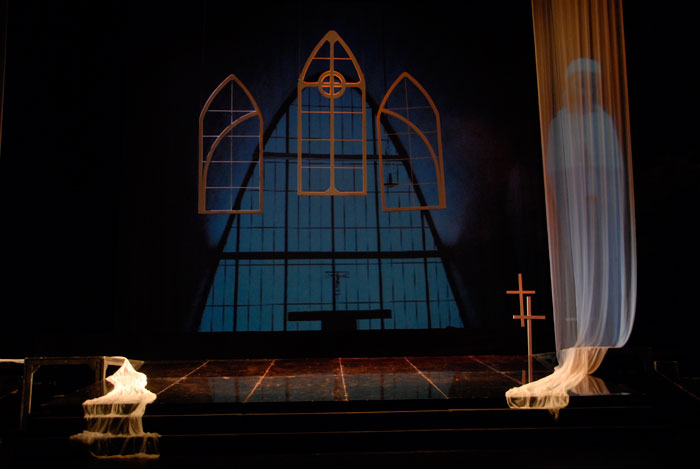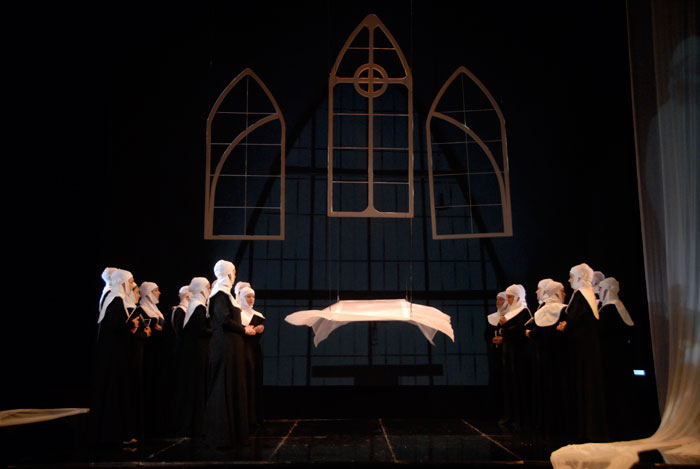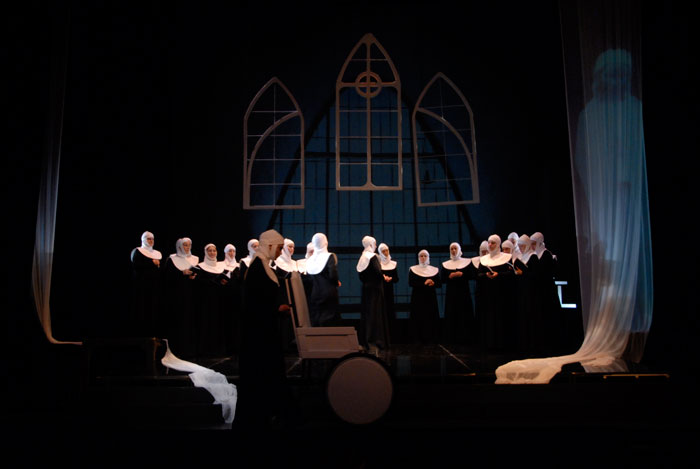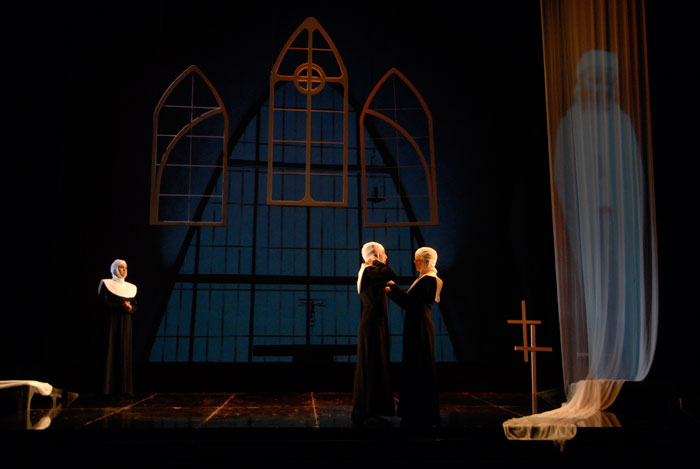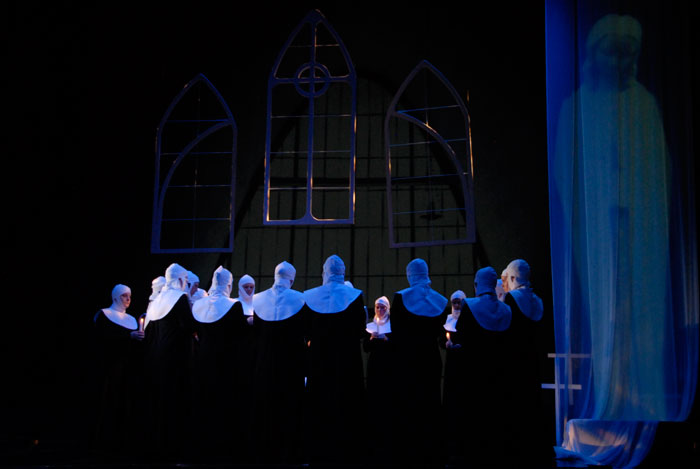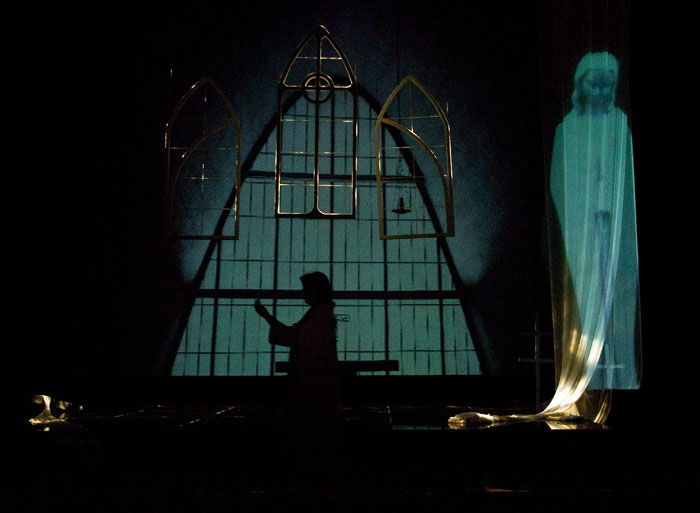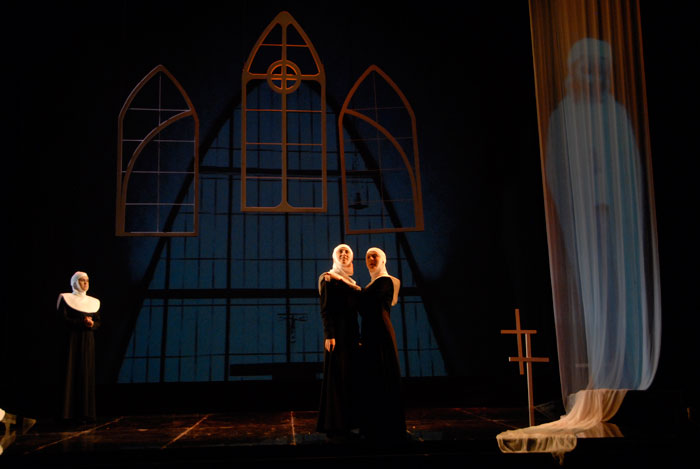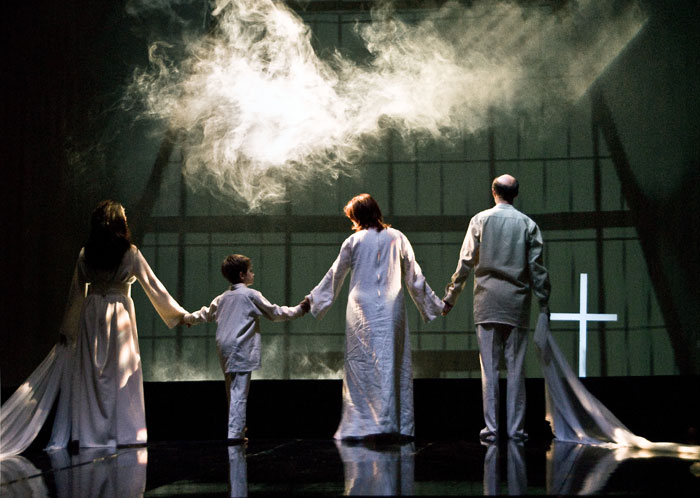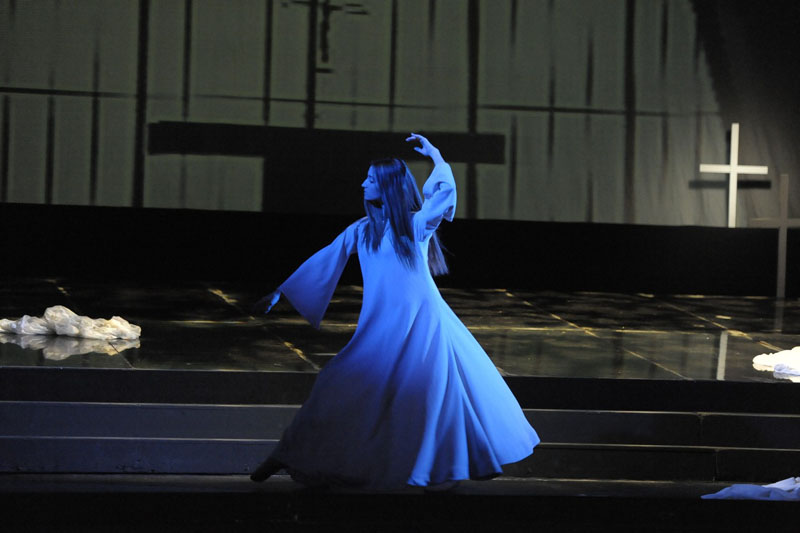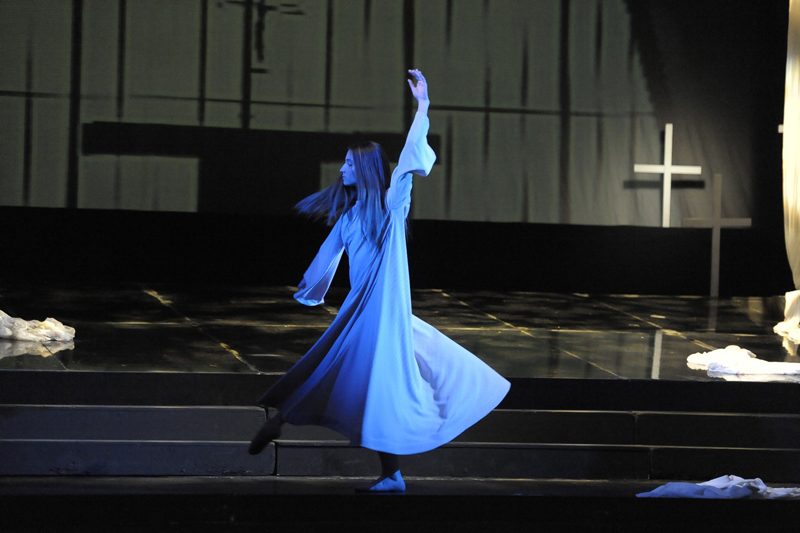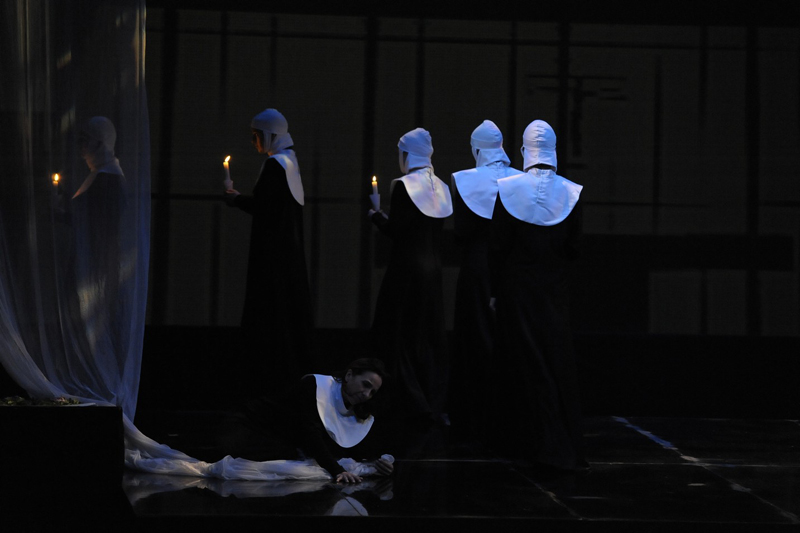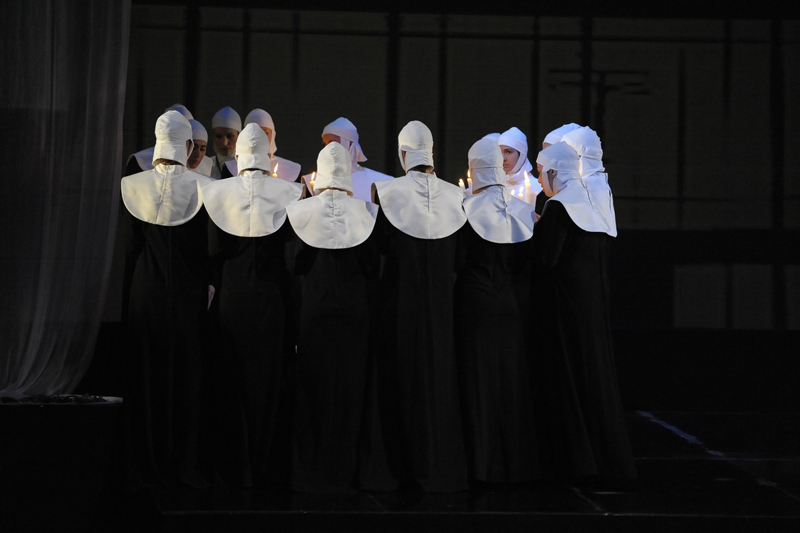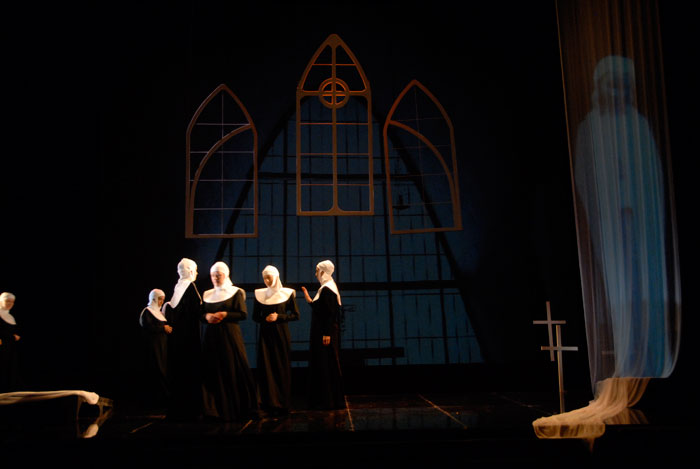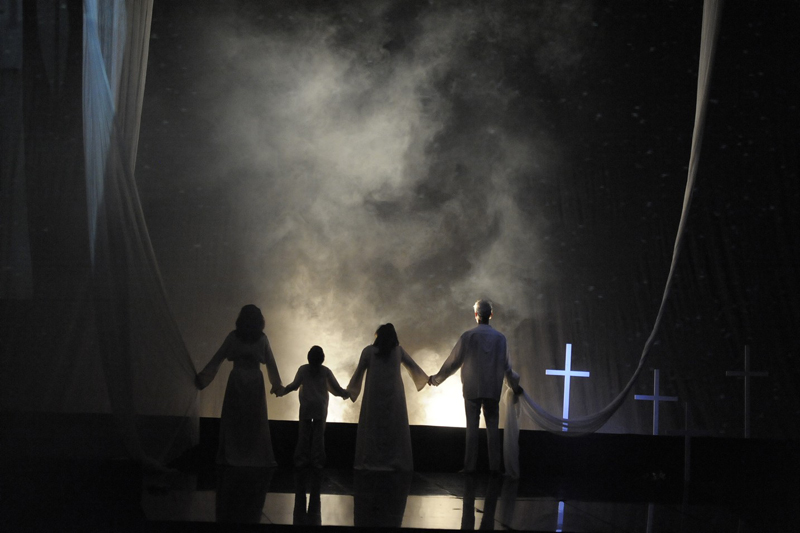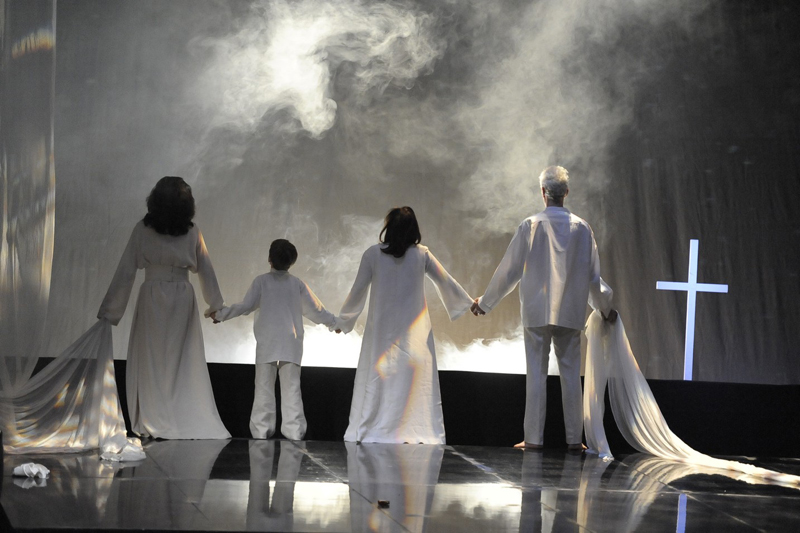About Performance

SYNOPSIS
A convent. Sister Angelica and two lay sisters are late for chapel. The Monitor chides them for not doing penance as Sister Angelica has done. Some of the sisters confess they still long for worldly pleasures—Sister Genovieffa for the lambs she used to tend and Sister Dolcina for sweet things to eat. Sister Angelica denies she has any such desires, but the others know she desperately longs for some word from her family. For seven years she has heard nothing from them, and the sisters speculate that she was a princess, banished to the convent for reasons they have been unable to discover. Soon alms collectors arrive, distributing the food they have gathered. One of them mentions that a magnificent coach bearing a visitor stands outside the convent gate. Angelica is startled and, with increasing anxiety, asks her to describe the coach in detail. A bell rings announcing the visitor. The Abbess enters and tells Angelica that her aunt, the Princess, has come to see her. Approaching, the Princess rejects Angelica’s gestures of affection. The Princess explains that when Angelica’s parents died, she was made guardian of both Angelica and her sister, Anna Viola, and was given control over their inheritance (“Il principe Gualtiero”). Anna Viola is to be married and the Princess demands Angelica sign her share over to her sister. Having brought disgrace on the family name, the Princess declares, Angelica is no longer entitled to any part of the inheritance. Crushed by her aunt’s cruelty, Angelica swears she has repented. She cannot, however, erase the memory of her little son, who, she learns, died two years ago. Her will now broken, Angelica sobs and signs the document. The Princess withdraws and Angelica grieves that her son died without his mother by his side (“Senza mamma”). Resolving to join her child in heaven, she drinks poison. She is then struck by the reality of what she has done and prays for salvation. A celestial choir is heard and Angelica sees a vision of the Blessed Virgin with her child.
www.metoperafamily.org
THE TRIPTYCH AND SISTER ANGELICA
Puccini experienced a crisis after his “holy trinity of operas” La boheme, Tosca and Madame Butterfly. Upon the crisis, he created The Triptych – The Cloak, Sister Angelica and Gianni Schicchi. Librettos for the latter two were written by Giovacchino Forzano (a baritone, journalist, manager of Florentine newspaper La Nazione, playwright, librettist, stage and film director; he was renowned for his opera stage directing – in a way he was the first Italian opera stage director, although Ricordi and Illica were his predecessors). Thus, Puccini wrote the opera to the original librettos and not the adaptations to the existing ones. It is not a surprise that Sister Angelica had an immediate appeal to Puccini, the plot takes place in a convent, because Puccini’s sister (Igenia) was Mother Superior in the convent in Vicepelago. Puccini visited his sister in the convent frequently and became well acquainted with nuns’ life. (…) As soon as he finished the opera (on 14th September 1917), he went to his sister’s monastery and sang and played the whole Sister Angelica to the nuns. He saw that they were touched deeply by the opera, some even cried; he believed that he wrote a good opera and that the public would accept it. Unfortunately, he was wrong. At first, the plan was to have the opening of The Triptych in Rome, but since the negotiations between Tito Ricordi and the Teatro Constanzi took too long, it was decided that the world premiere should take place at the Metropolitan Opera in New York. The New York premiere took place on 14th December 1918, only a month after the ceasefire. Since it was difficult to travel at the time, Puccini did not attend the premiere in New York. It was the first time he had not attended a premiere of one of his works. Not a month later, on 11th January 1919, the European premiere took place in Rome. The royal family and the author attended the Italian premiere. A year and a half later, on 18th June 1920, the premiere in London took place, again attended by the royal family and the author. Puccini was adamant that The Triptych is a unity that should not be divided into parts; he saw it as a single performance that had to be performed in full at all times. Nonetheless, Luigi Ricci quoted Puccini after a performance in Florence in 1920, when Puccini realised that The Triptych was too long and tiring, it took almost four hours including the breaks, “I am tired as well, and I am the author”, and so Puccini allowed the individual performance of the three operas since then. Puccini thought that The Cloak would be the most popular, although he liked Sister Angelica best, but Gianni Schicchi had the best reception with audiences everywhere. Sister Angelica remained a festival opera, performed on occasion, although Sartori thought that it is the best one of the three, which was Puccini’s opinion as well.
Taken from: Slobodan Turlakov, Puccini and the Verists, The Borba, 2003
Sister Angelica has been on the National Theatre’s repertory only once; it was the production of the National Theatre’s Opera Studio, which premiered on 13th December 2004 (taken from the Faculty of Music Arts). The opera was performed on the “Raša Plaović” Stage with Radoslav Zlatan Dorić as the stage director, Aleksandar Kolarević as the music director, Miraš Vuksanović as the set designer and Katarina Grčić as the costume designer. In this production, soloists were accompanied by Professor Aleksandar Kolarević at the piano with bells, organ, trumpets, piccolo and harp played by Professor Zorka Milivojević, together with the Choir of “Žikica Jovanović Španac“ Culture and Arts Association, under the baton of Maestro Đorđe Stanković. The performance remained on the repertory for three seasons; it was performed 15 times (including an on tour performance in the Students’ City and three performances together with Gianni Schicchi, also a production of the Opera Studio) for almost 1500 people.
J. S.
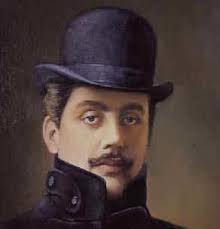 GIACOMO PUCCINI (1858–1924)
GIACOMO PUCCINI (1858–1924)
… Puccini was born in Lucca, a small town in Tuscany, on 22 December 1858. He graduated from the Milan Conservatory, mentored by Bazzini and Ponchielli; at the time, Ponchielli was famous for his opera La Gioconda. Since he possessed a lot of sense for opera theatre, Puccini dedicated himself exclusively to opera compositions. After his first attempts (Le villi, 1884; Edgar, 1889) and first successes (Manon Lescaut, 1893), he became internationally popular with his most significant and most popular operas, La Boheme (1898), Tosca (1900) and Madam Butterfly (1904). Later on, he wrote scores for La fanciulla del West (1912), La rondine (1917), Il trittico (Il tabarro, Suor Angelica, Gianni Schicchi, 1918) and his final piece, Turandot (performed in 1926). Puccini chose his librettos quite effectively…Being a man of a certain theatre instinct, Puccini had a feeling for stage and always looked for exciting drama plots and upheld the cult of grand gestures and desperate actions resulting from strong passions. Puccini formulated the secret of every theatre success, “There are three laws when theatre is concerned: stir interest, surprise and impress.” This is his aesthetic motto. Puccini paid much attention to the nerves of his audiences and influenced them, frequently using even external stimulations. His operatic style presents more or less harmonic mixture of brutality and sentimentality. The two characteristics of his style have their special origins. When brutality, naturalism, rough contrast and wide lines are concerned, Puccini’s style represents a direct continuation of verismo style… When analysed from composition-technical point of view, Puccini’s scores consist of mosaic musical contents, superbly and wittily instrumented and formulated into a unity by a hand of a master. Intensive orchestra emphasis of drama, surprising contrasts, great gradations, often artificial and implausible, temperamental outbursts, vocalisation of melodic lines in the style of Italian tradition – were main characteristics of Puccini’s operatic style.
… Puccini remains a supreme master of opera stage, together with Verdi, when taking into account modern tendencies in opera.
B. Dragutinović
Premiere performance
Premiere revival, 9. march 2016
Main Stage
Opera in one act
Libretto by Giovacchino Forzano
World Premiere of The Triptych by Puccini (Sister Angelica, The Cloak and Gianni Schicchi) took place in the Metropolitan Opera in New York on 14 December 1918
Conductor Đorđe Stanković
Stage Director Ivana Dragutinović Maričić
Costume Designer Katarina Grčić Nikolić
Set Designer Miraš Vuksanović
Premiere Cast:
Sister Angelica Aleksandra Stamenković Garsija / Nevena Pavlović
The Princess Nataša Jović Trivić / Dubravka Filipović
The Abbes, the convent’s superior Jelena Petrović / Nataša Rašić
The Mistress of the Novices Tatjana Mitić
Sister Genevieve Marijana Šovran
Sister Osmina Jana Jovanović* / Aleksandra Petrović*
Sister Luchila Mina Marković Kovač
Sister Dolcina Jelisaveta Cvjetković*
The Alms Sisters Milica Stojčev*, Jelisaveta Cvjetković*
A Novice Jelena Škorić*
The Sick Nurse Sister Jovana Belić / Nevena Matić
Angelica’s Father Dejan Mraković
Angelica’s Mother Svetlana Đisalov
Angelica’s Child Ivan Kujačić / Luka Smolović
The Orchestra and Choir of The National Theatre’s Opera
Concertmaster Edit Makedonska
Chorus Master Đorđe Stanković
Music Rehearsal Associates Srđan Jaraković, Gleb Gorbunov, Nada Matijević, Dijana Diskić
Cello Gleb Gorbunov
Organ Nada Matijević
Piano Tatjana Ščerbak Pređa
Choreographer Paša Musić
Organisers Maša Milanović Minić, Snježana Vujasinović Đorđević, Nemanja Stanojević
Stage Manager Mirjana Goločevac
Caption translation of the libretto Maja Janušić
Video materials prepared by Petar Antonović
Stage Master Zoran Mirić
Make-Up Dragoljub Jeremić
Lighting Master Miodrag Milivojević
Sound Master Perica Ćurković
Sets and costumes were made in The National Theatre’s Workshops







